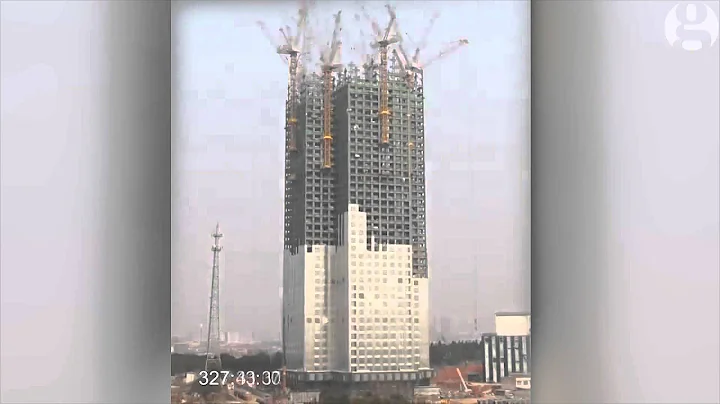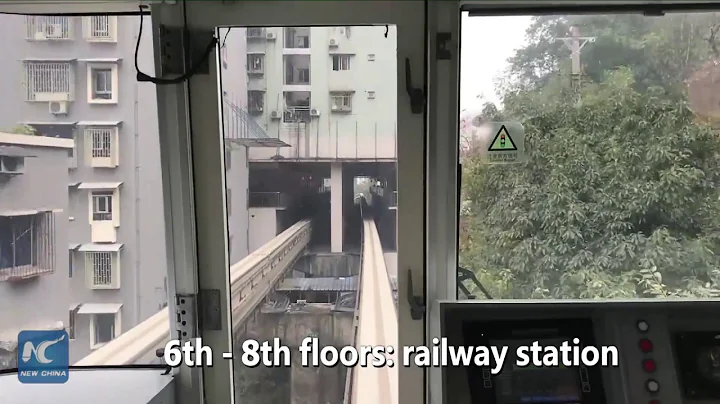
At that time, builders were in full swing building the Chengdu-Chongqing Railway. (Information picture)
The wheels are rolling and the whistle is blowing. 70 years ago, in order to build the first railway in New China, more than 100,000 migrant workers and more than 30,000 members of the military road construction team participated in the construction of the Chengdu-Chongqing Railway. At the beginning of the founding of New China, there was a lot of waste waiting to be done. Without any mechanical equipment, the road construction army relied on primitive tools such as hammers, steel drills, and poles to build the 505-kilometer road in just two years. of railway. How difficult was it to build this railway at that time?
Today, let’s listen to their stories about the Chengdu-Chongqing Railway. Maybe you can find the answer.
Narrator: Sun Yisun, 90 years old
Hold a gun in one hand and a pickaxe to build the railway with local materials
"You must be prepared, hold a gun in one hand and a pickaxe in one hand, overcome difficulties, and insist on building this railway." June 1950 On the 12th, at the groundbreaking ceremony of the Chengdu-Chongqing Railway, Deng Xiaoping spoke at the rostrum, which deeply impressed the 18-year-old Sun Yisun.

Sun Yisun told the story of building the Chengdu-Chongqing Railway. (Photo courtesy of interviewee)

The "Military Road Construction Commemorative Medal" collected by Sun Yisun. (Photo provided by interviewee)
As soon as the groundbreaking ceremony ended, five military road construction teams rushed to each construction section of the Chengdu-Chongqing Railway. Sun Yisun said that he is the staff officer of the Second Regiment directly under the First Corps of Military Road Construction of the Southwest Military Region. He is responsible for coordinating the progress of the entire railway construction work and participating in the construction of the railway. The First Corps has a total of more than 10,000 people and is responsible for the road construction from Chongqing to Yongchuan. Task.
"Life was very difficult at that time. We lived in temporary work sheds made of bamboo, and ate pumpkin and sorghum rice almost every meal." Sun Yisun said that they got up at dawn every morning to work, and did not come back until very late at night. No shoes, bare feet. In the early days of construction of
, due to the shortage of raw materials required for the railway, they could only use local materials. The rails were rolled by themselves, and the explosives were made by local methods. There was no transportation machinery, so they carried it on their shoulders and in their hands, and then built their own trolleys to flip over and dump themselves; lack of For lifting equipment, they designed chain hoist pulleys and cable cranes. Even some of the wood used for sleepers was voluntarily donated by people along the line. Among the wood, there are many valuable woods such as camphor and nanmu. Some elderly people even sawed their own wood into sleepers and sent them to the construction site.

When building the Chengdu-Chongqing Railway, sleepers were laid. (File picture)
But Sun Yisun and others faced difficulties not only in road construction, but also in attacks by bandits.
"Once, I followed the communications company to set up telephone lines from Chongqing to Jiangjin. After completing the work, I was almost attacked by bandits when I was having dinner at a fellow villager's house in Nibituo." Sun Yisun said that fortunately, a fellow villager came to remind him in time. , they made preparations in advance before wiping out the bandits.
In this way, despite the difficulties, the construction project of the Chengdu-Chongqing Railway was not delayed for a moment.
On July 1, 1952, the Chengdu-Chongqing Railway was officially opened. The first whistle sounded throughout Bashu, and Sun Yisun was very excited. That day, he got up before dawn and took a good seat in advance to witness this great moment.
Narrator: Li Zeyuan is 96 years old
Bucket truck transporting rocks His hands and belly have calluses
"We gathered at the then Ba County County Government (now Yudong) on August 12, 1950, and walked for a day to get there. Yongchuan, arrived at the construction site on the 17th, rested for two days, and then started building the road. "When talking about the construction of the Chengdu-Chongqing Railway, the 96-year-old Li Zeyuan still remembers it vividly.

Elder Li Zeyuan told the story of the construction of the Chengdu-Chongqing Railway. Photo by Upstream News reporter Ren Jun
"We have more than 30 people in the Second Squadron, mainly responsible for building the Post Office Pavilion (now Dazu) station." Li Zeyuan said that the conditions were very difficult at that time. Everyone lived in the homes of nearby villagers and slept on the ground with straw. , get up at 5 o'clock every morning and start work at 7 o'clock. The tools for road construction are even simpler, including hammers, pickaxes, drills, steel drills, bucket trucks...many of which are brought from home.
Li Zeyuan said that at that time, he used a bucket truck to transport stones. He had to hold more than 30 kilograms of stones one by one and put them on the bucket truck with his bare hands. More than 30 pieces were placed in each truck. Over time, calluses formed on his hands and belly. .
The method of opening mountains and firing cannons at that time was also very primitive. One person would use the palm of the hand to drill and the other to swing the hammer. The hammer would hit the ground and the steel drill would rotate, which was extremely inefficient. Relying on these most primitive tools, it took only 8 months to dig out the mountain more than 30 meters high, fill in the railway roadbed and compact it, and successfully passed the acceptance inspection.
After the Post Office (now Dazu) station was repaired, he moved on to build another station. "The conditions were equally difficult at that time. We all ate at the construction site, with five people at a table, white rice and beans, and enough to keep them full." Li Zeyuan said with a smile. In order to boost their morale, the team leader also taught them to sing "Unity is Strength" in order to complete the project as soon as possible. For the first railway in New China, everyone worked hard without any complaints. They worked hard for another 7 months. Finally, among the three squadrons, they took the lead in completing the construction task.
Because of his outstanding performance, Li Zeyuan was hired by the Chongqing Railway Bureau at the time and became a "railway man". On July 1, 1952, Li Zeyuan was very excited when he learned the news of the opening of the Chengdu-Chongqing Railway. Subsequently, he and his co-workers traveled to Yongchuan, Zhuyangxi, Dazu Post Office Pavilion, and Neijiang Chumu Town to build signaling infrastructure equipment, becoming the first batch of railway signaling workers after the founding of the People's Republic of China.
Narrator: Huang Jianguo, 65 years old
His father and his co-workers work day and night shifts 24 hours a day
In the home of 65-year-old Huang Jianguo, there is a "Commemorative Medal for the Opening of the Chengdu-Chongqing Railway". This is a precious souvenir that Huang Jianguo’s father, Huang Zhongming, received when the Chengdu-Chongqing Railway was completed and opened to traffic 70 years ago.

Huang Zhongming received the "Chengdu-Chongqing Railway Opening Commemorative Medal". Photo provided by the interviewee
"This medal bears witness to my father's hard work in the construction of the Chengdu-Chongqing Railway." Huang Jianguo said that when his father was alive, he often held this medal and told him about the past events of the construction of the Chengdu-Chongqing Railway.
At that time, Huang Zhongming was only 17 years old. Due to the need to recruit a large number of workers along the Chengdu-Chongqing Railway for construction, Huang Zhongming joined the construction team and became associated with the railway.
The road section Huang Zhongming participated in the construction is from Xiaonanhai to Neijiang. Chongqing has many mountains, and blasting is common during construction. However, the Chengdu-Chongqing Railway tries its best to only "cut through the mountains" and not "pass through the mountains".
Huang Jianguo's father once told him that the reason why the Chengdu-Chongqing Railway was built along the river was that, first, construction materials could be transported by water, saving transportation costs; more importantly, it could reduce tunnel digging and save construction costs.
"At that time, railway construction was very hard, but everyone was full of energy." Huang Jianguo said that the construction of the Chengdu-Chongqing Railway was almost non-stop 24 hours a day. The construction site was divided into day shift and night shift. Sometimes, in order to meet the construction deadline, his father and his co-workers took the initiative to ask for day shift and night shift to repair the railway as soon as possible.
Upstream News Reporter Li Jing Liu Bo





















